- Home
- Neal Asher
Jack Four
Jack Four Read online
JACK FOUR
By Neal Asher
Agent Cormac series
Gridlinked • The Line of Polity
Brass Man • Polity Agent • Line War
Spatterjay trilogy
The Skinner
The Voyage of the Sable Keech
Orbus
Standalone Polity novels
Prador Moon • Hilldiggers
Shadow of the Scorpion
The Technician • Jack Four
The Owner series
The Departure • Zero Point • Jupiter War
Transformation trilogy
Dark Intelligence • War Factory
Infinity Engine
Rise of the Jain trilogy
The Soldier • The Warship The Human
Cowl
Novellas
The Parasite • Mindgames: Fool’s Mate
Short-story collections
Runcible Tales • The Engineer
The Gabble
NEAL
ASHER
JACK FOUR
Copyright © 2021 by Neal Asher.
First published in the United Kingdom by Tor, an imprint of Pan Macmillan, a division of Macmillan Publishers Limited.
All rights reserved. No part of this book may be reproduced in any manner without the express written consent of the publisher, except in the case of brief excerpts in critical reviews or articles. All inquiries should be addressed to Start Publishing LLC, 221 River Street, 9th Floor, Hoboken, NJ 07030.
Night Shade Books is an imprint of Start Publishing LLC.
Visit our website at www.start-publihsing.com.
10 9 8 7 6 5 4 3 2 1
ISBN: 978-1-59780-660-2
Printed in the United States of America
In this time of Covid-19, bitter elections and general political throat-tearing, it’s difficult to step outside my cynicism to find anyone to dedicate this book to, so instead I’ll dedicate it to the island of Crete – for my garden in the calm of Papagiannades where I grow chillies, for the mountains that provide me with energy even after trudging through them for miles, for the Libyan Sea where, while out in my kayak, I can find a quiet mind.
Thank you, Crete.
Acknowledgements
My thanks to those who have helped bring this novel to your e-reader, smartphone, computer screen and to that old-fashioned mass of wood pulp called a book. At Macmillan these include Bella Pagan (editor), Georgia Summers (assistant editor), Samantha Fletcher (desk editor), Neil Lang (jacket designer) and Eleanor Bailey (marketing); also freelancers Jessica Cuthbert-Smith (copy-editor), Robert Clark (proofreader), Steve Stone (jacket illustrator) and Jamie-Lee Nardone (publicity); and others whose names I simply don’t know.
Though at times they irk me with their demands to see more from this character or that in my previous books, further thanks are due to the fans I chat with on social media. I may not end up doing what they want, but they do spark some things off. It’s pleasing to know that they get joy from the same things as me, but then, I was a fan myself before I tentatively pushed down a key on my father’s old manual typewriter!
Glossary
Atheter (The): A highly advanced space-faring race who during their time encountered the civilization-destroying Jain technology. Eventually, to escape this technology, they committed a form of racial suicide by sacrificing their civilization and intelligence. Their animal descendants still exist on the planet Masada. They are gabbleducks – creatures that speak nonsense and whose behaviour is always strange.
Augmented: To be ‘augmented’ is to have taken advantage of one or more of the many available cybernetic devices, mechanical additions and, distinctly, cerebral augmentations. In the last case we have, of course, the ubiquitous ‘aug’ and such backformations as ‘auged’, ‘auging-in’ and the execrable ‘all auged up’. But it does not stop there: the word ‘aug’ has now become confused with auger and augur – which is understandable considering the way an aug connects and the information that then becomes available. So now you can ‘auger’ information from the AI net, and a prediction made by an aug prognostic subprogram can be called an augury.
– From ‘Quince Guide’ compiled by humans
First- and second-children: Male prador, chemically maintained in adolescence, enslaved by pheromones emitted by their fathers and acting as crew on their ships or as soldiers. Prador adults also use their surgically removed ganglions (brains) as navigational computers in their ships and to control war machines.
Hardfield: A flat force field capable of stopping missiles and energy beams. The impact or heat energy is transformed and dissipated by its projector. Overload of that projector usually results in its catastrophic breakdown, at which point it is ejected from the vessel containing it. Hardfields of any other format were supposed to be impossible; however, it has now been revealed that they can be made spherical and almost impenetrable …
Hooders: The devolved descendants of Atheter biomech war machines. Creatures that look like giant centipedes, they retain some of their war machine past in that they are rugged, tough, vicious and very difficult to kill with conventional weapons.
Hooper: A human from the oceanic world of Spatterjay who has been infected with the Spatterjay virus. Commonly passed on through a leech bite, this virus makes its host inhumanly strong, dangerous and long-lived.
Jain technology: A technology spanning all scientific disciplines, created by one of the dead races – the Jain. Its apparent sum purpose is to spread through civilizations and annihilate them.
King of the prador: The king who ruled the prador when they attacked the Polity was usurped by another prador who had been infected with the Spatterjay virus. The new king, and his family, have been highly mutated by this, resulting in extreme body changes and increased intelligence.
Nanosuite: A suite of nanomachines most human beings have inside them. These self-propagating machines act as a secondary immune system, repairing and adjusting the body. Each suite can be altered to suit the individual and his or her circumstances.
Polity: A human/AI dominion extending across many star systems, occupying a spherical space spanning the thickness of the galaxy and centred on Earth. It is ruled over by the AIs who took control of human affairs in what has been called, because of its very low casualty rate, the Quiet War. The top AI is called Earth Central (EC) and resides in a building on the shore of Lake Geneva, while planetary AIs, lower down in the hierarchy, rule over other worlds. The Polity is a highly technical civilization but its weakness was its reliance on travel by ‘runcible’ – instantaneous matter transmission gates.
Prador: A highly xenophobic race of giant crablike aliens ruled by a king and his family. Hostility is implicit in their biology and, upon encountering the Polity, they immediately attacked it. They originally had an advantage in the prador/human war in that they did not use runcibles (such devices needed the intelligence of AIs to control them and the prador are also hostile to any form of artificial intelligence) and as a result had developed their spaceship technology, and the metallurgy involved, beyond that of the Polity. They attacked with near-indestructible ships, but in the end the humans and AIs adapted, their war factories out-manufactured the prador and they began to win. They did not complete the victory, however, because the old king was usurped and the new king made an uneasy peace with the Polity.
Quantum crystals: Can be used to store masses of data in a distributed fashion throughout any system, including the human body. This form of storage is being experimented with by the Polity and can take the place of a memplant – a device used to record a human mind.
Reaver: A huge golden ship shaped like an extended teardrop and one of the feared vessels of the prador King’s Guard.
Runcible: Instantane
ous matter transmission gates, allowing transportation through underspace.
U-space: Underspace is the continuum spaceships enter (or U-jump into), rather like submarines submerging, to travel faster than light. It is also the continuum that can be crossed by using runcible gates, making travel between worlds linked by such gates all but instantaneous.
1
When the cold coffin opened, only the body of a human male existed. It had a bald skull, dark complexion and hazel eyes. The brain which sat inside its skull was a blank slate, though one formatted along standard lines. It would not, for example, need to be instructed how to keep its heart beating; autonomics ran as they should. The shape of a human mentality was sketched through the grey and white matter, but there was no sentient person there.
The body lacked all the bolt-on advantages of current humanity, such as nanosuites, boosting, cerebral augs, gridlinks or motorized paraphernalia. It was in fact one of a vanishingly small number of humans not to be a cyborg. It did, however, have its genetic modifications, since the superfluous had been removed, ensuring it would suffer no inherited diseases. Without intervention, it had a good chance of living for a hundred and fifty years solstan. Right now, it seemed highly unlikely it would make it into its teens.
Microwave heating raised the body’s temperature and particular chemical processes kicked into motion, but in all these activities there was no tendency, yet, towards decay. Mitochondria stayed on hold, awaiting their trigger. Pads folded around the skull. These injected a host of nanofibres and tubules into the head, which began making connections throughout, injecting neurochem and jump-starting nerve impulses. Other pads touched here and there over the body, injecting more neuro-chem, a required microbiome, complex proteins and sugars, as well as carbon fibres into the heart muscle and spine. Everything was starting to reach readiness as the body rose to optimum temperature. Enzyme keys to turn on the mitochondria flooded the heart and it soon began beating, spreading that key throughout the body in the blood. Following this, the organs started up in a steady cascade. The complex chemical factory of the liver began its work, while in the skull the fibres and tubules laid down data in moving patterns that would allow the brain to function, to understand some of its environment and to respond to simple orders.
I opened my eyes.
The cold coffin had popped open and I lay gazing up at a shiny aseptic surface, flinching as connections pulled out of my sore limbs, my mind all but vacant. I then felt something buzz against the side of my neck and an impulse driving me. I sat up and looked around, seeing further coffins protruding from other walls and their occupants also sitting up. I even felt a little sick, but didn’t realize then that my body didn’t possess the alterations to the inner ear most modern humans possessed.
‘Proceed to the exit,’ said a voice.
I understood the words perfectly, even though I had never heard nor spoken words before. It gave me context, a sense of place and what ‘exit’ would mean, and with that a growing sense of self. I felt an urgency to obey them, but also some confusion about where an exit might be. Others started hauling themselves out of their coffins and moving in a direction I labelled ‘down’ in relation to my position in the coffin, while the idea of ‘cold coffin’ lodged in my mind, but with language associations I did not understand. I watched the first of my fellows pull herself through a circular hatch. Understanding of shapes intruded on my thoughts, along with ‘hatch’, its only association, for a second, to the ‘lid’ of my coffin, but then came ideas of doors and other movable items that might block my progress. I noted then that all the females looked the same as each other, as did the males. The concept of human sex differences had surfaced in my thoughts as a kind of ‘by the way’. Light flashed in my skull, then jagged lines crawled across my vision. I couldn’t identify this for a moment, until I came to understand these were the visual effect of a migraine headache – an ancient human condition. I next questioned my impulse to follow the others. Little did I realize this was the first moment I strayed from design, and that things were already happening in my mind which weren’t in the others’. Again I felt a buzzing against the side of my neck and my urgency to obey increased. I reached up and felt some solid lump attached there just below my ear. A further intense buzz drove shooting pains throughout my body and propelled me out of the coffin after the others.
I was the last through and floated into an area where some unknown force then grabbed me and pulled me down. Gravity, I realized, grasping the concept even as I fell beside one of the women, thumping into her. She looked at me blank-eyed, a stream of drool issuing from the side of her mouth. I noted the clamshell of technology attached to the side of her neck. The migraine lights flashed in my mind again and I recognized this thing as a slaver unit, based on prador thrall technology, which used the same nanowires and neural meshes as a cerebral augmentation to key into the brain and nervous system. I was wearing one too. The slavers could quickly impart complex instructions through it, which I’d be unable to disobey, as well as knowledge they felt it necessary for me to know, such as the effect of gravity. I also began to understand that my knowledge of this device hadn’t actually come from the thing itself, but was is some way related to the migraine lights.
‘Move into ranks,’ said the voice.
Images rose in my mind of soldiers standing in a row, and marching. Associations blossomed through my consciousness, including positions in organizations and societies, the relative importance of individuals and the smell of something foul. This surge of connecting thoughts, along with the sudden change in perspective and pull of gravity, made me retch for a moment and I spat green bile. I felt my flesh sagging on my bones as I stood up. Self-awareness of my human body and its constituents came upon me then – bones and organs and muscles. A positioning instruction fell into my mind and I walked unsteadily to my assigned place amidst the rest. I had a number and it was four; I knew the numbers of the others too and where I should be. I stood in the front row with five other men. Five more were behind us while two rows of five women stood behind them. I turned my head as a door opened to one side and two big ugly men walked in. I watched them but then noticed my fellows weren’t doing the same and so faced forwards again.
Knowledge, accompanied by a brief flash of jagged lines, arose from somewhere deep within me. I understood there’d be danger in revealing it and that I had to be like the others, to blend in. The two men were clad in heavy combat armour. Both their suits possessed a segmented insect look and were coloured black and white, as well as strewn with decals and insignia. I didn’t know what any of this meant and could only read ‘Strato-GZ’ on a decal. One guy’s armour was plain but bulky, while the other man seemed to have a taste for the baroque – his possessed ornate spikes and decorated plates to give it a barbarian look. Both had big pulse guns at their hips, while the one in the barbarian outfit also carried an ionic stun baton tucked into a belt, and a wide machete sheathed down his hip. Schematics of how these suits and the pulse guns worked bled into my perception, along with formulae of chemistry and physics, knowledge of materials technology and power supplies. My skull ached as all these details established themselves. It seemed as though thousands of windows had opened in my mind to endless progressions of data. The less ornate one then dropped a large plasmesh sack on the floor and kicked it over to my fellow at the end of our row.
‘Hand these out, Jack,’ said the man. I now understood that my fellow was Jack One while I was Jack Four, knowledge that came from a combination of initial loading and the other rising in my skull. Jack One stooped and took packages out of the bag, then handed them to the others. I accepted mine, as did the rest, and like them just stood there holding it, even though I recognized it as wire-toughened plasmesh overalls and slippers, which I would doubtless be told to put on. The instruction arrived shortly from the slaver unit on the side of my neck, with all the detail concerned with dressing – which I already knew. This made it clear to me that I wasn’t sup
posed to possess the growing body of information somehow being impressed in my consciousness.
‘I don’t see why she thinks clothing is necessary,’ said the man in barbarian gear, waving his stun baton at us. ‘It’s not like they even know they’re naked.’ My internal perception analysed the baton: its power supply and simple electromechanical action, and its effects.
‘All part of the deal, Brack,’ replied the other.
‘Maybe it’s to stop ’em fucking each other,’ said Brack. ‘But I doubt they’ve even got the minds for that.’
‘No,’ said the other. ‘The overalls are protective, to prevent damage. It’s dangerous for soft clones in there. Anyway, we’re SGZ and do what we’re told. If you wanna argue it with her, Brack, then be my guest.’
Soft clones …
I was a clone. Greater detail of human biology suddenly rose up for my inspection. I pulled on the overalls and slippers, careful to ape Jack Three next to me. Meanwhile I began to understand that I wouldn’t forget this Brack, for I was becoming aware, somehow, of everything I experienced being indelibly imprinted in my memory, and I understood too that this wasn’t normal. I wondered about the style of armour they wore, which seemed more than just military. What exactly did SGZ mean and who was the woman, obviously their boss? I wanted to see her and find out her name too.
‘Jill Eleven, stop dressing and come here,’ said Brack.
‘Come on, Brack, not now,’ said the other.
‘Hell, Frey, if you don’t try, you don’t fly.’
Frey: that name imprinted on my memory too.
The woman moved out of our ranks. She had pulled her overalls on up to her waist but now just held them bunched there as she came to stand before Brack.
‘Take them off,’ he said.
She obeyed, soon standing naked.

 The Bosch: A Novella (Polity Universe)
The Bosch: A Novella (Polity Universe) Jack Four
Jack Four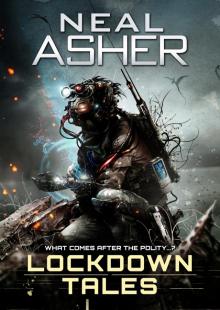 Lockdown Tales
Lockdown Tales The Warship
The Warship Line War
Line War Total Conflict
Total Conflict The Departure
The Departure Owner 03 - Jupiter War
Owner 03 - Jupiter War Polity Agent
Polity Agent Prador Moon
Prador Moon The Technician
The Technician Hilldiggers
Hilldiggers Gridlinked
Gridlinked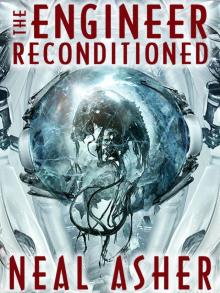 The Engineer ReConditioned
The Engineer ReConditioned Dark Intelligence
Dark Intelligence The Soldier: Rise of the Jain, Book One
The Soldier: Rise of the Jain, Book One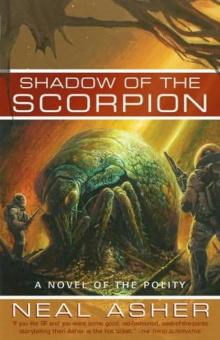 Shadow of the Scorpion p-2
Shadow of the Scorpion p-2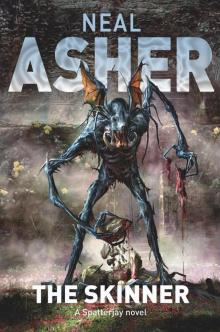 The Skinner
The Skinner The Soldier
The Soldier The Gabble p-13
The Gabble p-13 The Gabble and Other Stories
The Gabble and Other Stories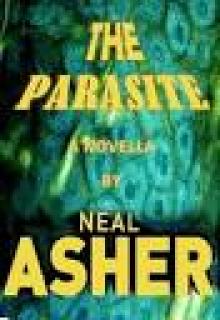 The Parasite
The Parasite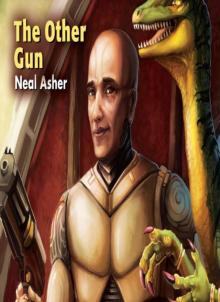 The Other Gun
The Other Gun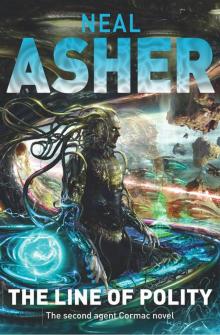 The Line of Polity
The Line of Polity Zero Point (Owner Trilogy 2)
Zero Point (Owner Trilogy 2)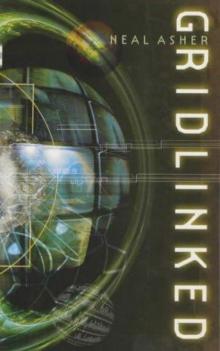 Gridlinked ac-1
Gridlinked ac-1 Prador Moon p-1
Prador Moon p-1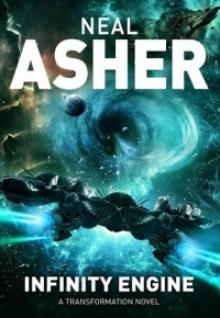 Infinity Engine
Infinity Engine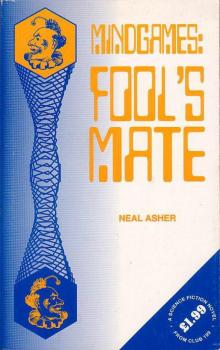 Mindgames: Fool's Mate
Mindgames: Fool's Mate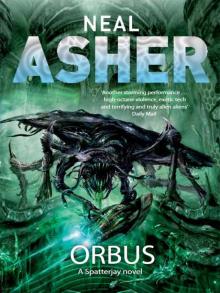 Orbus
Orbus Africa Zero
Africa Zero Line War ac-5
Line War ac-5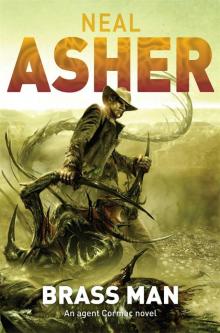 Brass Man
Brass Man The Departure to-1
The Departure to-1 Cowl
Cowl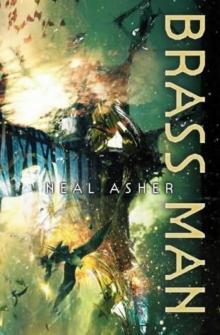 Brass Man ac-3
Brass Man ac-3 Hilldiggers (polity)
Hilldiggers (polity)![Greg Bear - [Eon Trilogy 1] - Eon (rescan) (v1.0) Read online](http://i1.bookreadfree.com/i2/04/08/greg_bear_-_eon_trilogy_1_-_eon_rescan_v1_0_preview.jpg) Greg Bear - [Eon Trilogy 1] - Eon (rescan) (v1.0)
Greg Bear - [Eon Trilogy 1] - Eon (rescan) (v1.0) The Skinner s-1
The Skinner s-1 The Voyage of the Sable Keech s-2
The Voyage of the Sable Keech s-2 The Line of Polity ac-2
The Line of Polity ac-2 War Factory: Transformations Book Two
War Factory: Transformations Book Two Polity Agent ac-4
Polity Agent ac-4